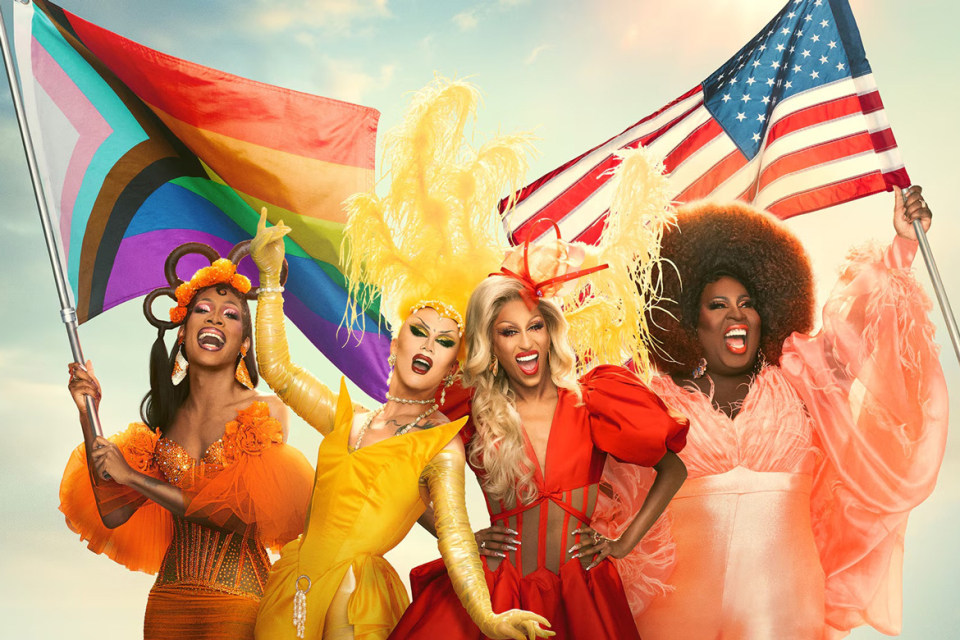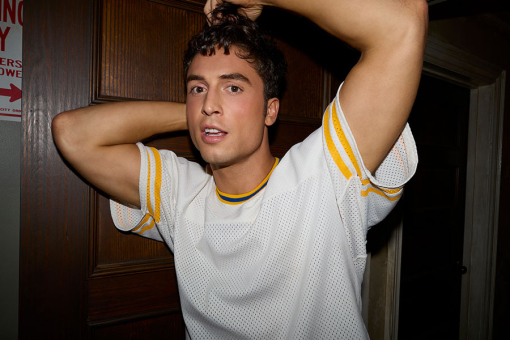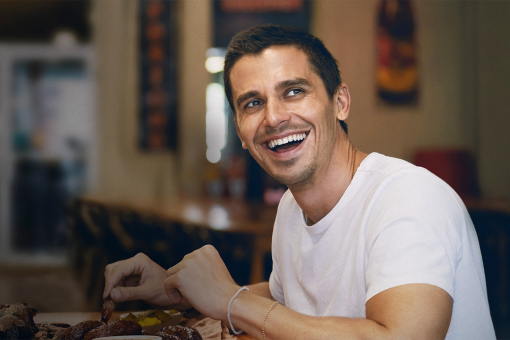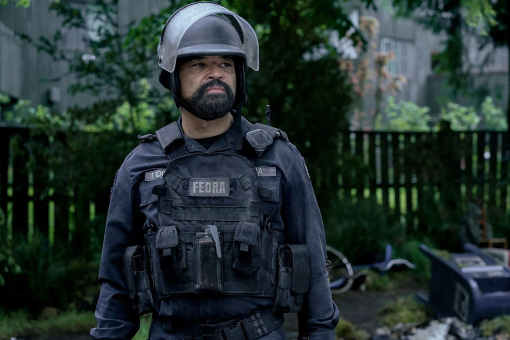For four seasons, the Max reality series We're Here has put charismatic drag queens center stage as they travel across the United States to inspire small-town America residents to step (and dance) outside of their comfort zones.
In its fourth season, currently streaming, the show has moved outside of its own comfort zone to a degree. New hosts have joined season four — Latrice Royale, Sasha Velour, Jaida Essence Hall and Priyanka. And fans have no doubt noticed that the series has revamped its format, replacing its new-location-per-episode with a more documentary-driven style that allows for stories to be told in one place across three episodic installments. To celebrate the new season of We're Here, director and showrunner Peter LoGreco spoke with the Television Academy about the show's evolution.
Did Tennessee's public drag ban influence your decision to go there?
Absolutely. As Priyanka says, stuff's gotten more difficult for the LGBTQ community in many places. We felt like, to evolve the show, we wanted to engage with the political rhetoric directly. We've been to Florida, to Texas. In Tennessee's case — making drag illegal, not to forget stuff dealing with trans kids and trans rights — we wanted to make sure we went to those places and engaged with the environment and with people on the ground.
How did the ongoing anti-drag rhetoric affect casting?
The hatred people felt in their daily lives being codified, spoken about in the press, made them much more scared. State legislators talk about it and use it as a dog whistle, and so people tend to polarize around it. That led to participants being either really adamant about participating or more reluctant. We had a lot more attrition leading up to shooting than in the past, including supporting locations and characters. People were like, "I'm not gonna touch this."
The queens certainly got a chillier, more hostile reception in public this season. How do you protect the queens' physical safety and mental health?
For me, it was wanting to have a lot of check-ins. The queens were ready to use their platforms, and they knew it wasn't necessarily going to be well-received. We took it very seriously. Warner Bros. Discovery did safety reviews and security assessments anytime we were in drag. We were gonna visit the Tennessee State House — the belly of the beast — in drag, and I got a call from our legal team that morning saying, "What are you doing? You can't do that. They might get arrested." We had to talk through all of these things and really make sure the queens were making an informed decision about what they were doing. They were fearless about it and conscious.
The new cast of queens — Priyanka, Sasha, Jaida and Latrice — are very different personalities from the previous trio. How does that change the show's dynamic?
We didn't want to make them be something different from who they are. The depth, thoughtfulness and sensitivity that these queens brought — not to say that Bob, Shangela and Eureka couldn't — allowed stuff to develop over this longer arc in a really meaningful way, not only for the drag kids, but for the queens themselves.
In previous seasons, you did a single location per episode. In season three, you visit two locations over six episodes. What was behind the shake-up in format?
I pitched something closer to this earlier on. When we would go to a place for seven days, it was really focused on those drag kids and getting live shows up and running. It prevented us from exploring the community in which their drag kids were living. We thought if we were able to really dig in somewhere, the "patience" that members of the community who had a problem with us were showing when we're there for a week would wear much thinner. It's a different focus that felt like we were meeting the moment. It was gratifying to tell the stories differently and do something more organic, following our drag kids' journeys vis-a-vis their relationship with their environments.
Can you talk about the intense exchange between the queens and that father and daughter who spoke against drag at the city council meeting?
That's the perfect example of our longer presence in the community yielding a different type of interaction. We went to that meeting in drag to make a statement. I think Jaida, Sasha and Priyanka felt more intimidated and a little bit on their heels. It was an opportunity to see whether someone wanted to have a real conversation and be respectful. We checked with them first to see whether they'd be willing to talk with them. Jaida knew she had to take herself out because she was going to potentially raise the temperature to a place that wasn't respectful. Sasha and Priyanka were able to contain it, not let it get out of control, not express anything nasty or hateful. By doing that, they created the context for the dad and the daughter to not necessarily go there either. Of course, saying LGBTQ people are in a sex cult and that it's a religion, that's incredibly incendiary. At least the tone was respectful and calm the whole time.
We're Here is streaming now on Max.











